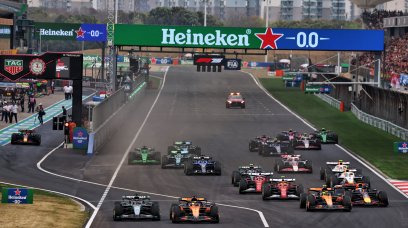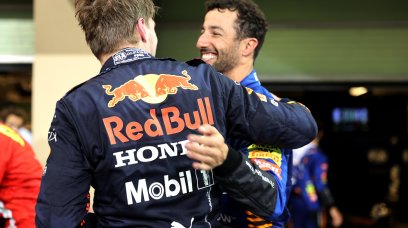Formula 1 teams have agreed to a change in the sport's technical regulations which would see floor edges lifted by 15mm to help eliminate car bouncing, RacingNews365.com has learned. Team representatives met at a Technical Advisory Committee meeting with the FIA last Wednesday, at which RacingNews365.com understands that an agreement was made to raise the cars' floor edges by 15mm. In a bid to reduce the bouncing that many teams have experienced with their 2022 cars, the FIA had previously proposed to raise the floors by 25mm, but this had been met with opposition from at least half the teams, with many citing concerns over costly redesigns of their 2023 cars, adding that their current cars were not thus afflicted. Mercedes Team Principal Toto Wolff had been a vocal proponent of raising the cars' floors, citing concerns over the effects of bouncing on drivers' health. "The FIA has commissioned medical work on the porpoising,” Wolff told the media in response to a question from RacingNews365.com. "The summary of the doctors is that frequency of 1-2Hz, sustained over a few minutes, can lead to brain damage. We have 6-7Hz over several hours. "So the answer is very easy: the FIA needs to do something about it."
Red Bull against raising floors
By contrast, championship leaders Red Bull have not struggled with bouncing to the same extent, and Team Principal Christian Horner had suggested that implementing a rule change on safety grounds would set an undesirable precedent. "I think that a compromise needs to be found, but it's a little bit of a tricky one because that regulation change is massive. It changes the whole concept of the aerodynamics," Horner told RacingNews365.com during the Hungarian Grand Prix weekend. "And it's a tricky one for the FIA, because where do you draw the line? While there is a safety obligation of the FIA to look into, where does that line stop? "Do we need to seek permission to go from slicks to wet or wet to slicks? If we hit a kerb or not? You've got to be very careful about the unintended consequences of these things." Speaking exclusively to RacingNews365.com after the 15mm raise was agreed upon, Horner struck a phlegmatic tone. "[15mm] is not as good as leaving it alone, [but] it's not as bad as the 25mm that was originally [suggested]. It's a compromise that we're just going to have to incorporate for next year," said Horner. "We'll just have to deal with it and find a solution. That's what we've been good at over the years, and we'll just have to do that with this challenge."
Horner: Roll hoop collapse is more concerning
During the Hungarian Grand Prix weekend, Horner had also referenced Zhou Guanyu's accident at the British Grand Prix, where the Chinese driver's Alfa Romeo overturned and its protective roll hoop appeared to collapse upon its first impact with the ground. Horner referred to the roll hoop's lack of effective protection and a shape that made the car susceptible to digging into the ground as a greater danger to drivers' health and safety than bouncing and porpoising. "Safety is of paramount importance to everybody, but it has to be taken into context," said Horner. "I'd be far more concerned about the roll hoop on the [Alfa Romeo]. That needs looking at from a driver protection point of view." Concerns over the disintegration of Zhou's roll hoop were also raised at Wednesday's Technical Advisory Committee meeting, and RacingNews365.com understands that the FIA is to take action. For 2023, the roll hoops are required to have a more rounded top to reduce the risk of digging into the ground in the event of a car overturning. Additionally, for 2024, the upper sections of F1 cars will have to pass more stringent load tests.
Most read







